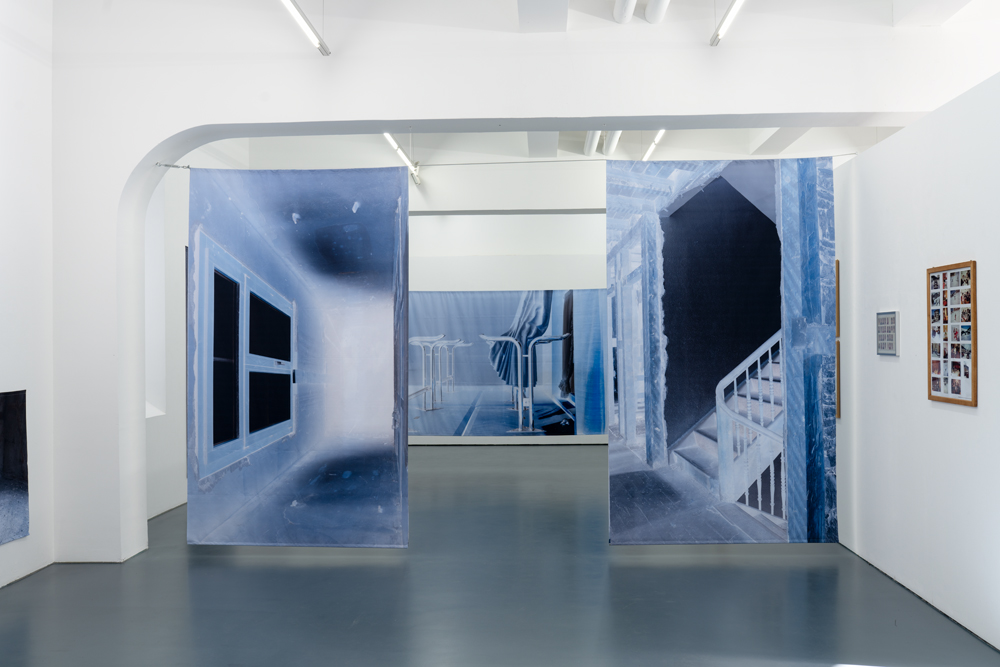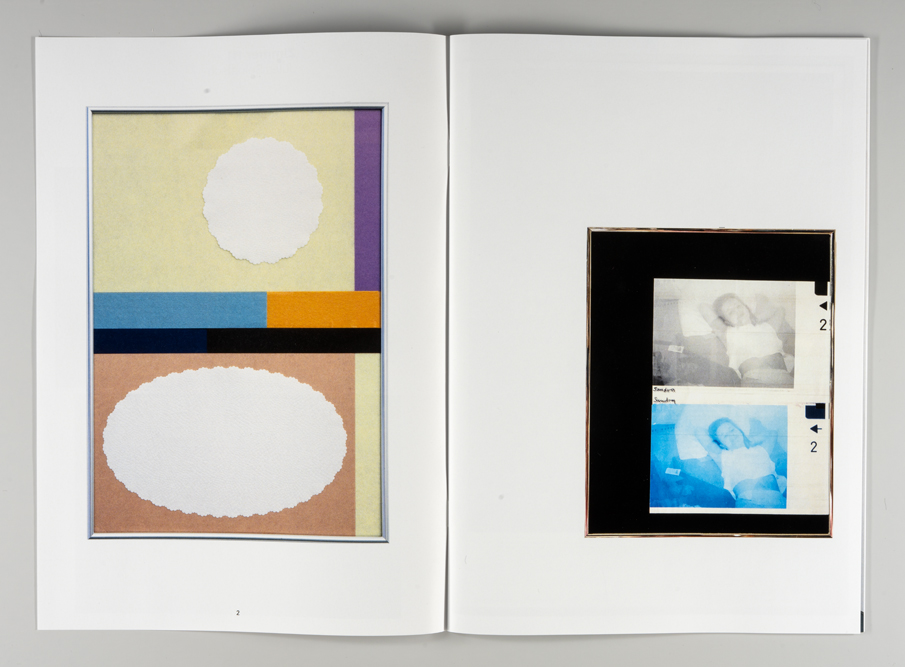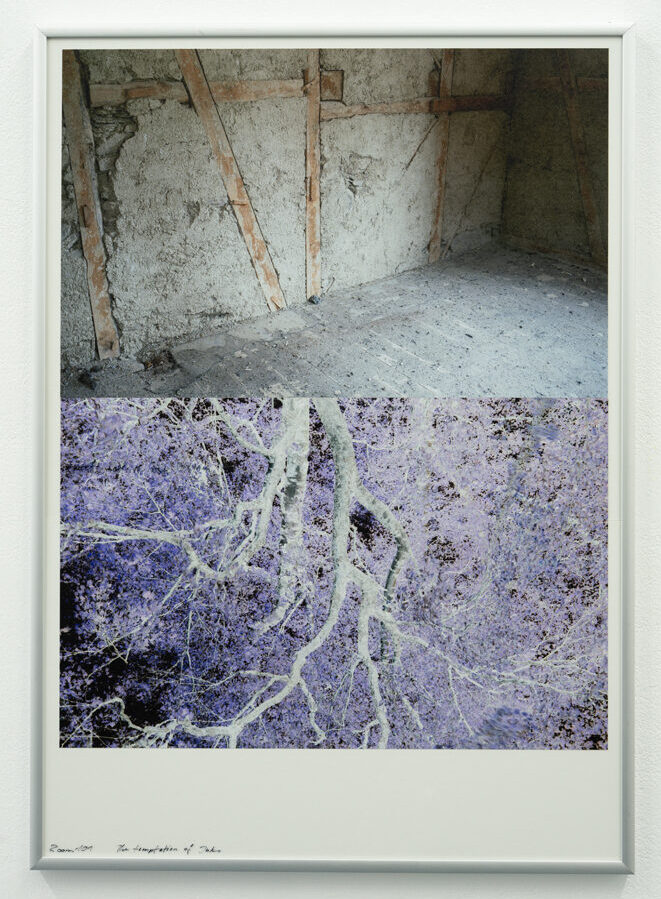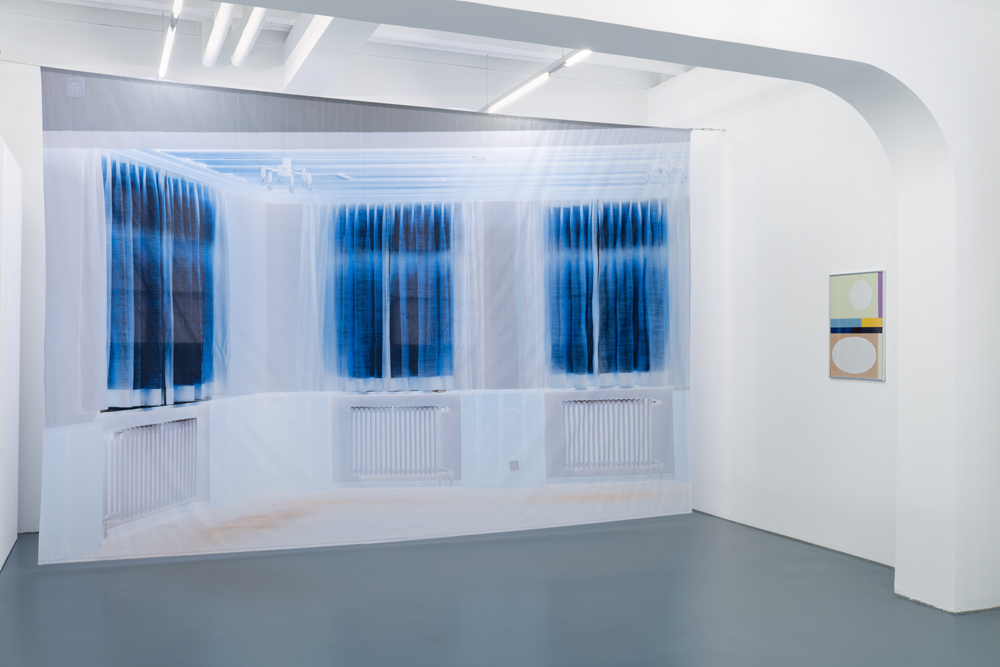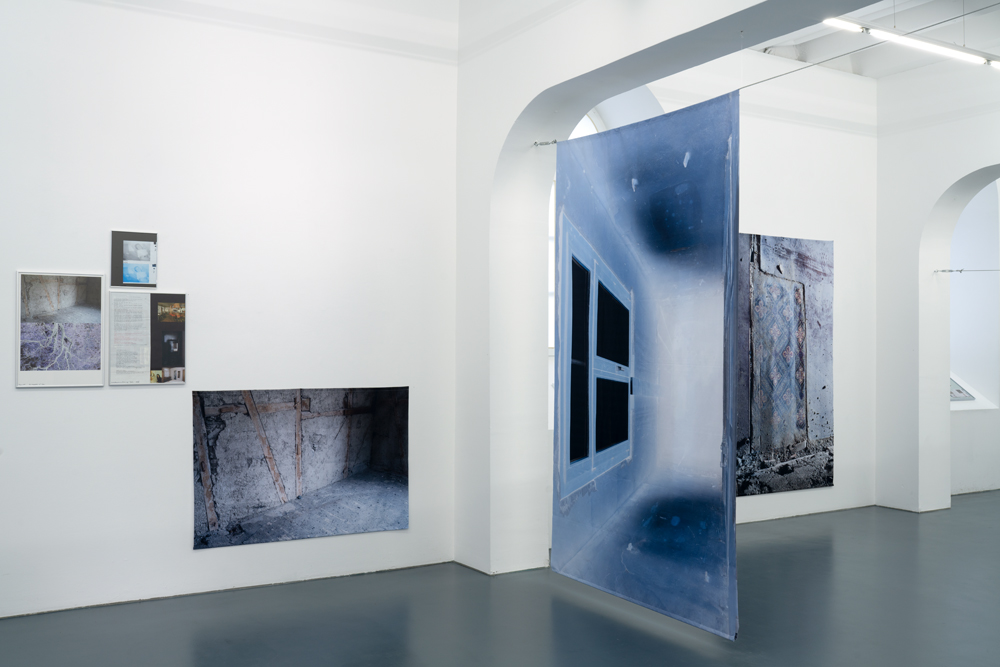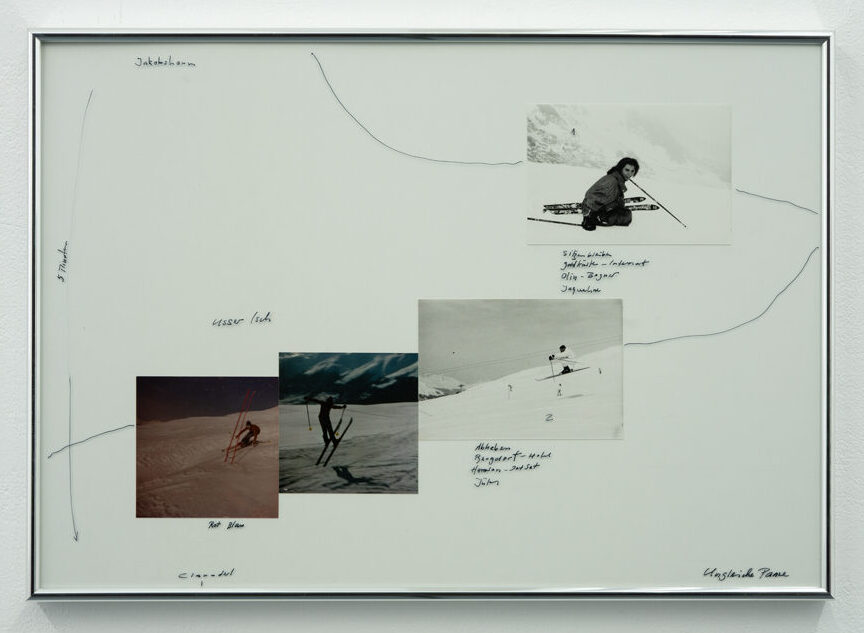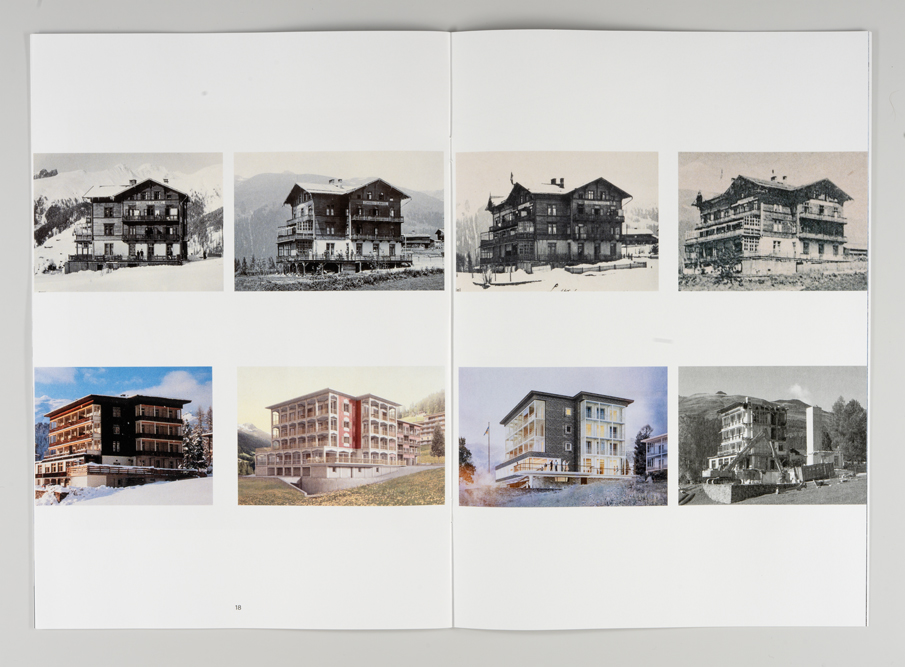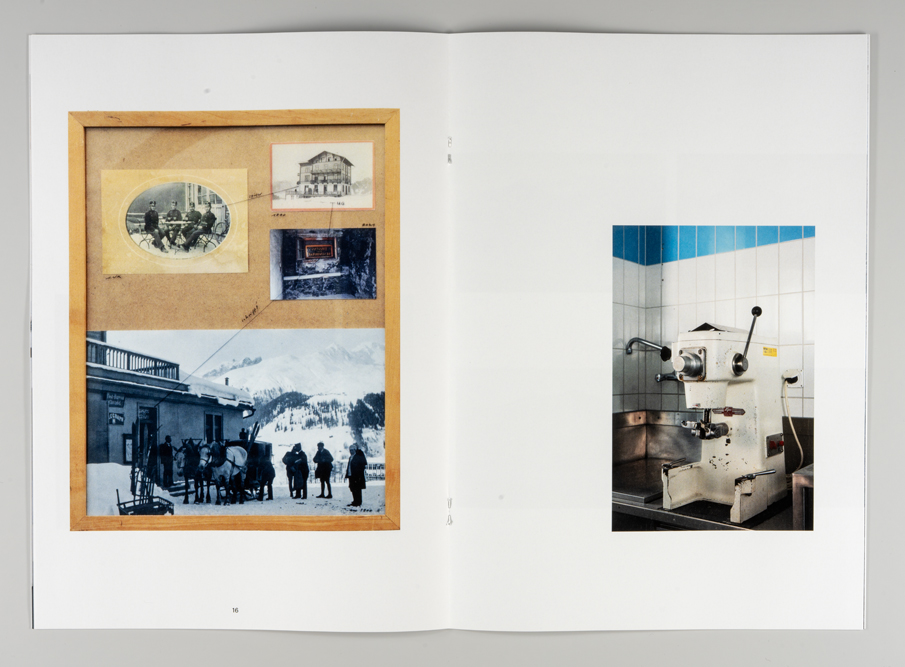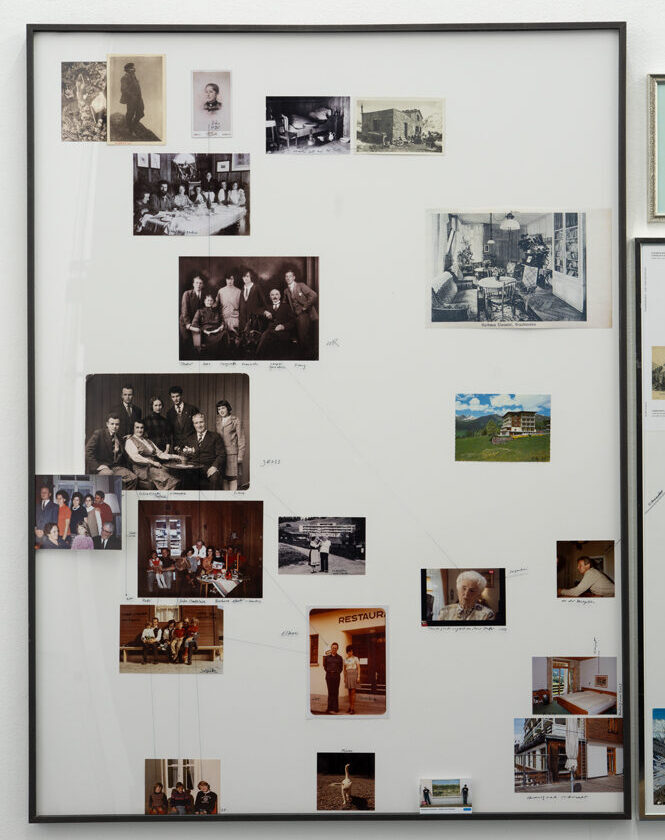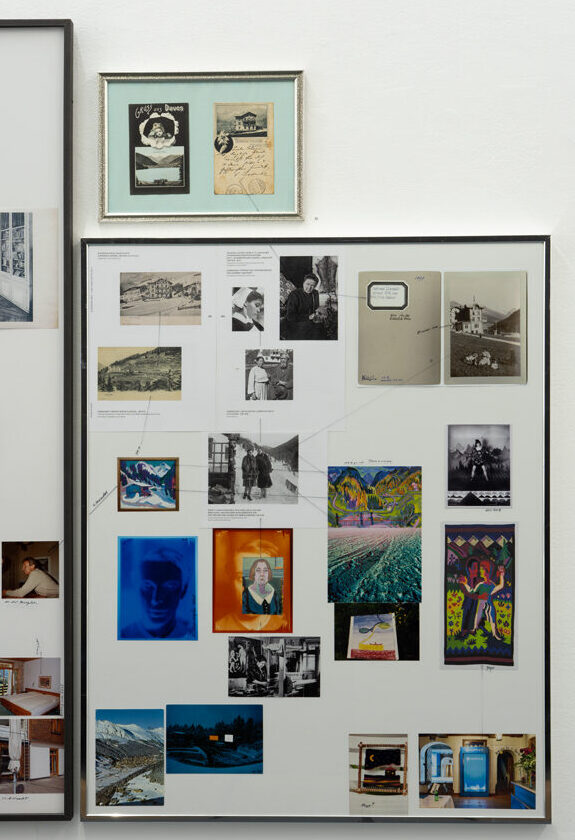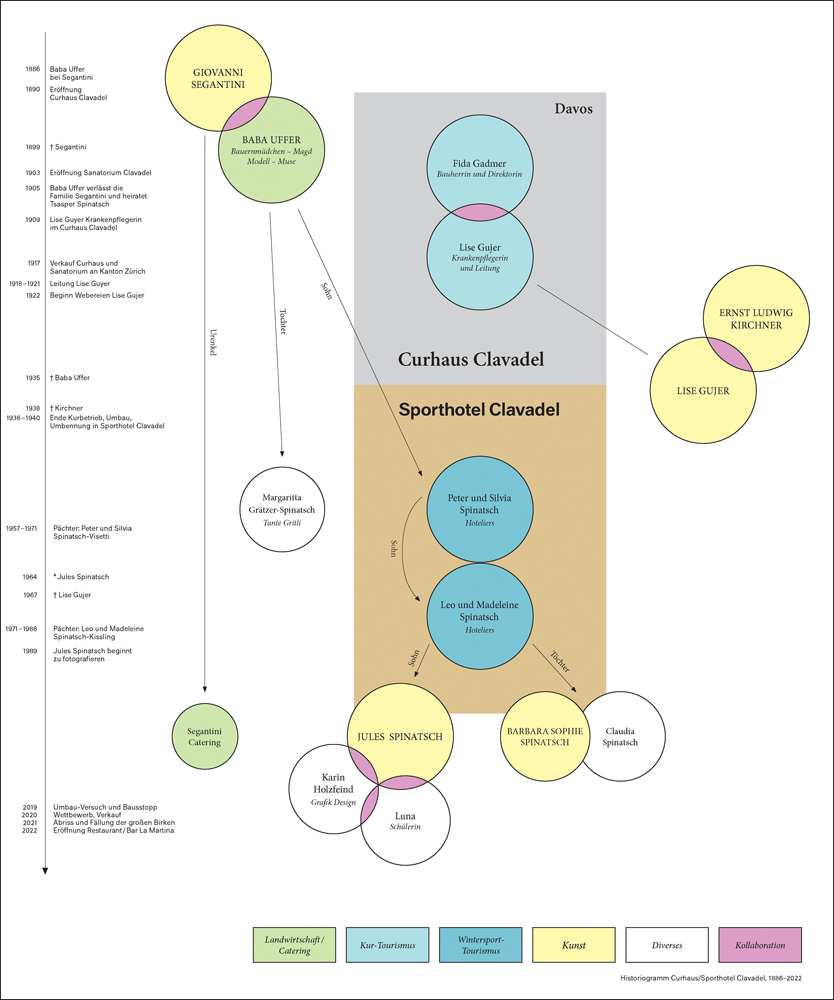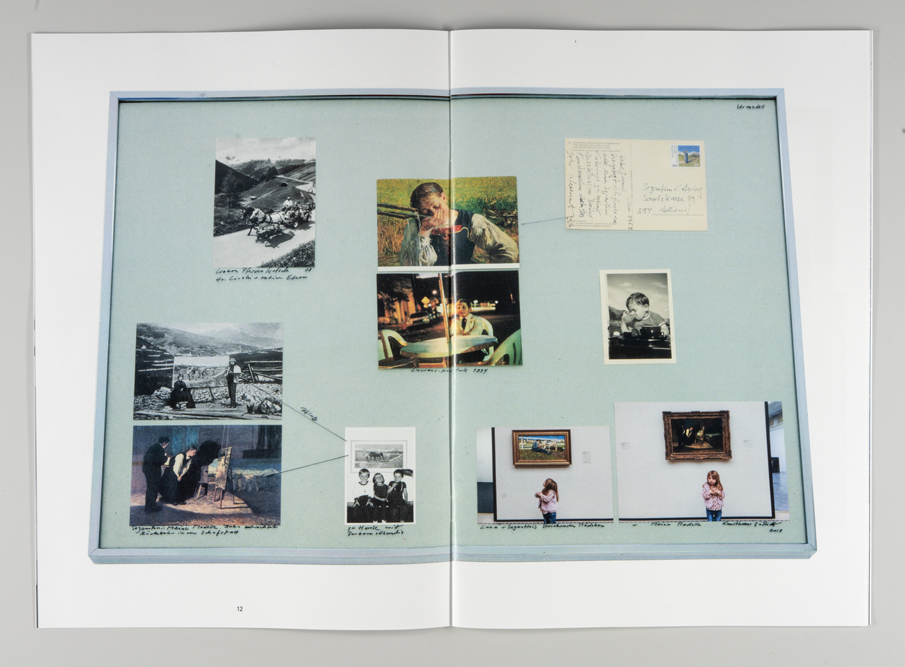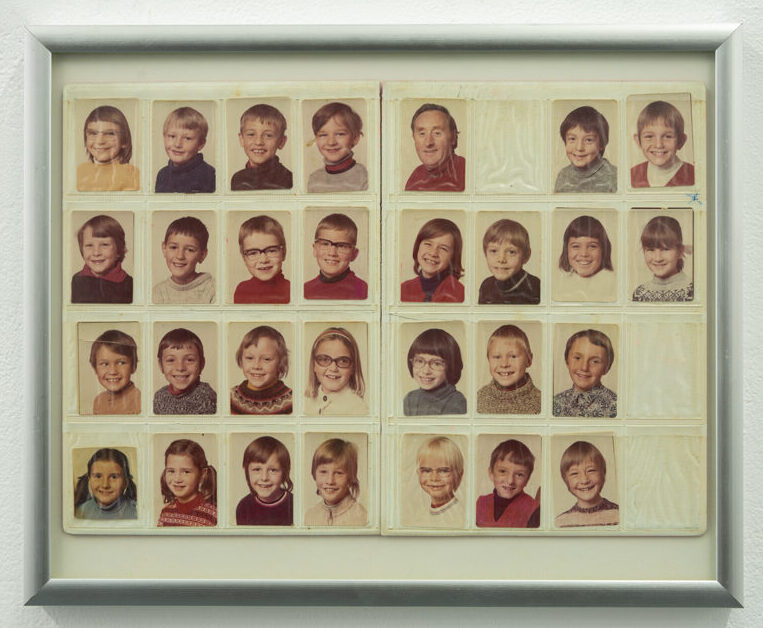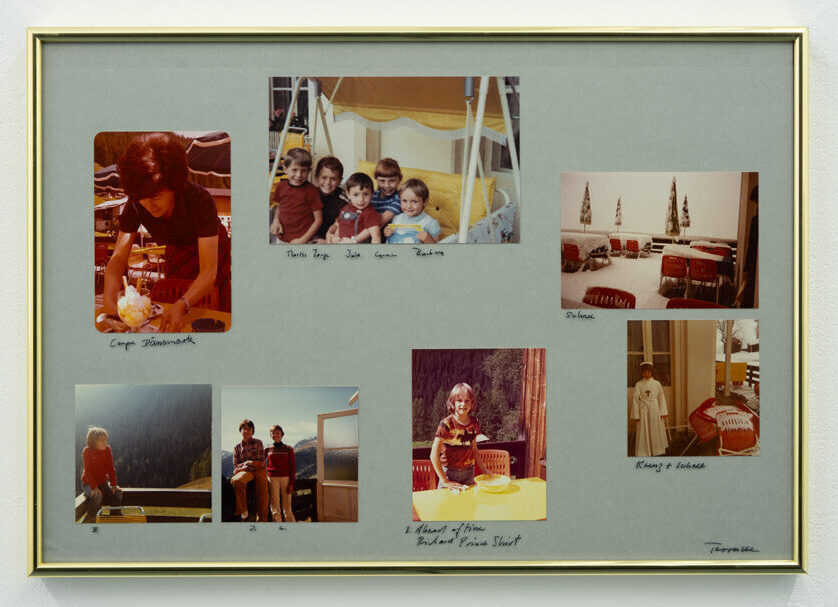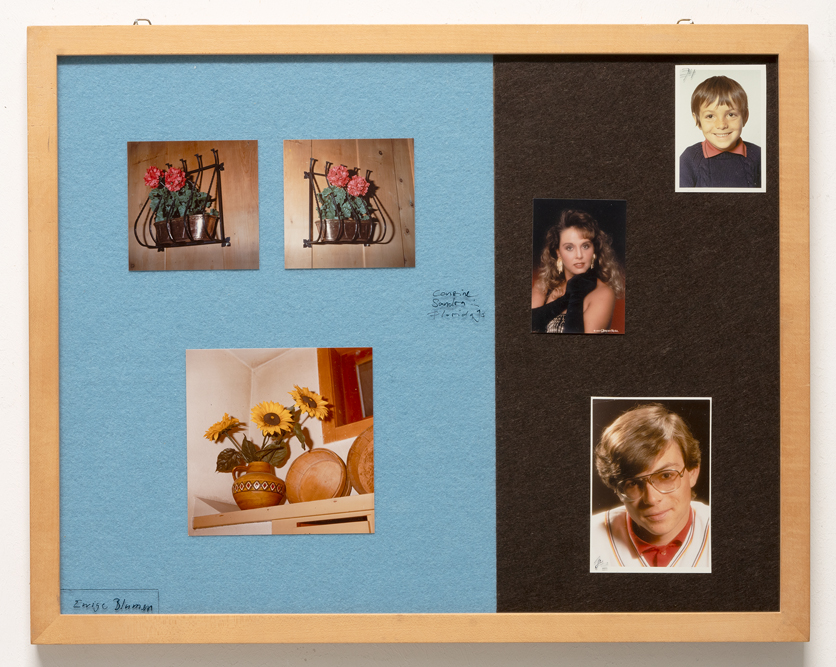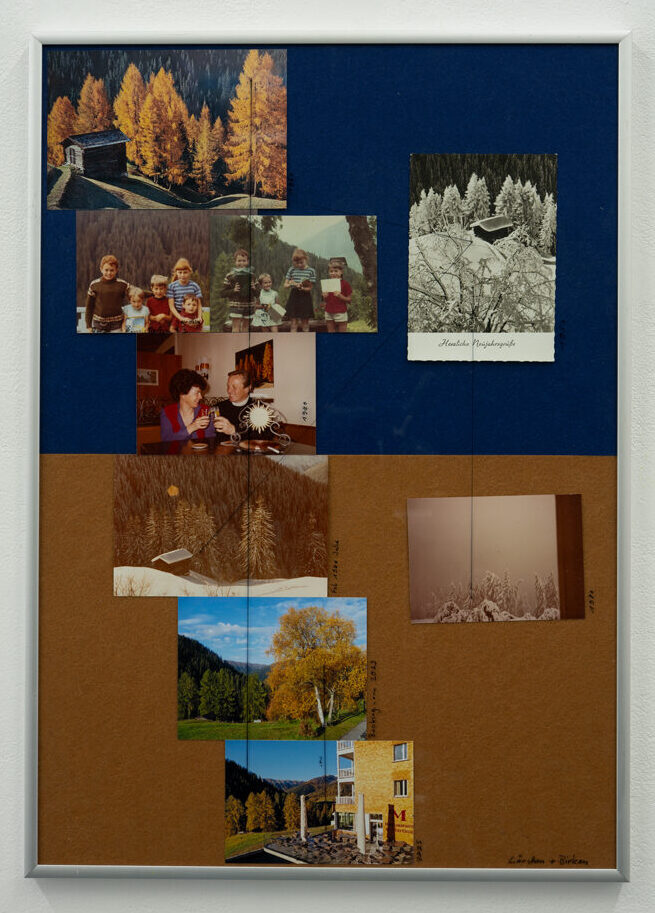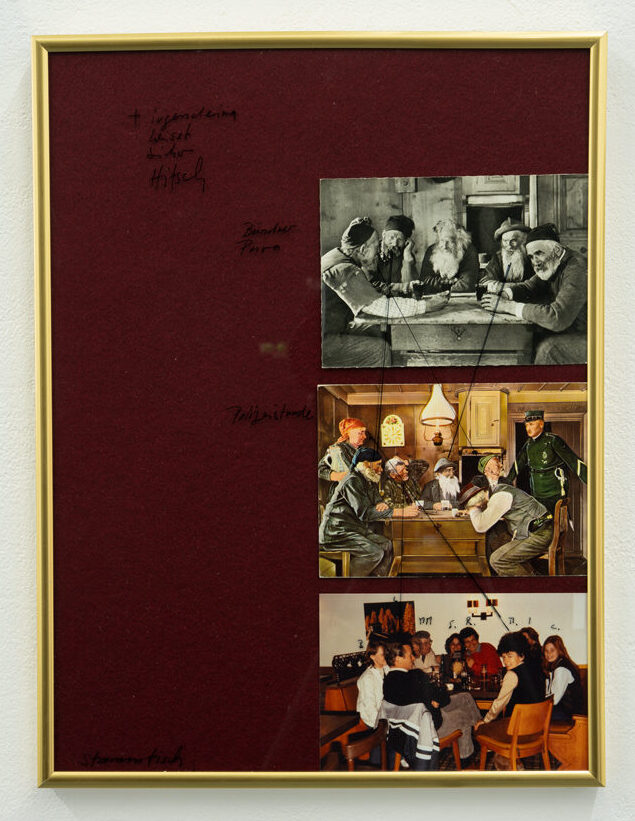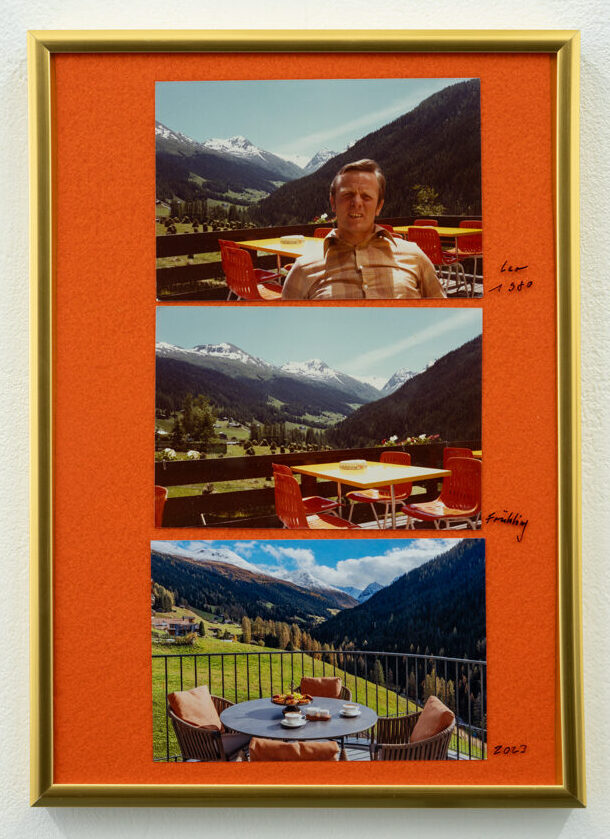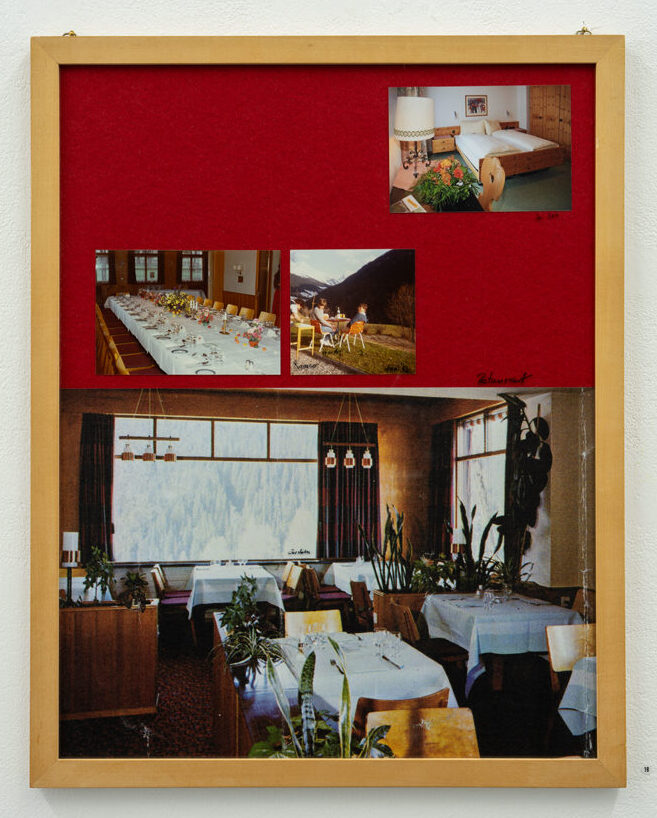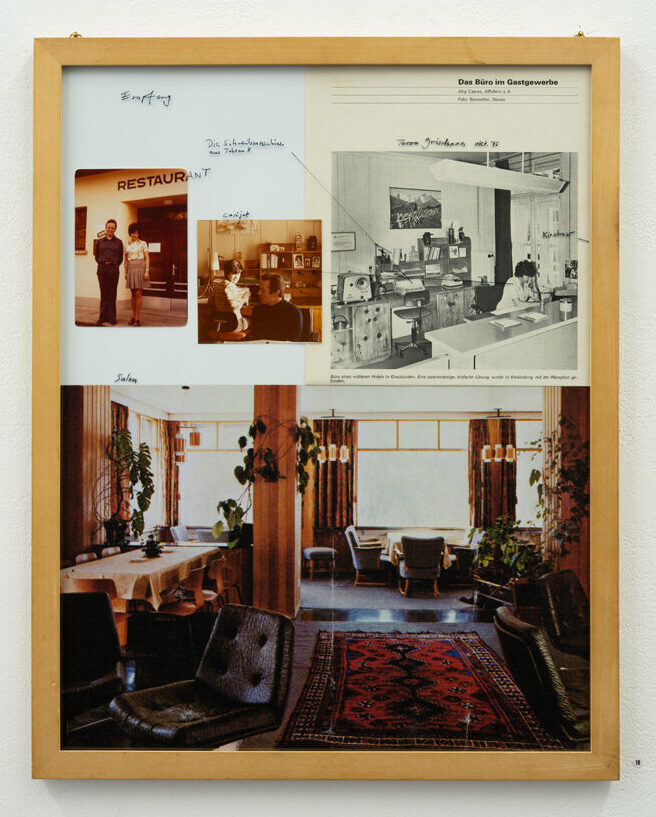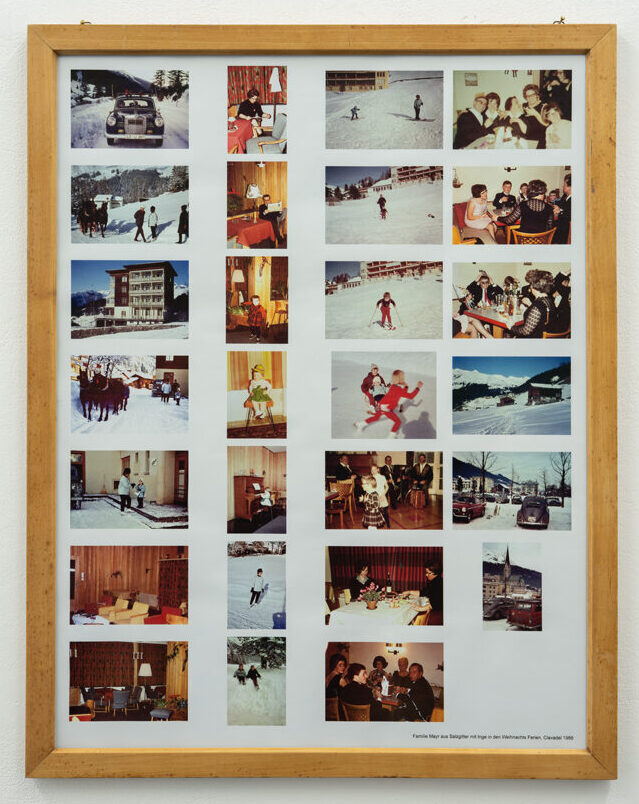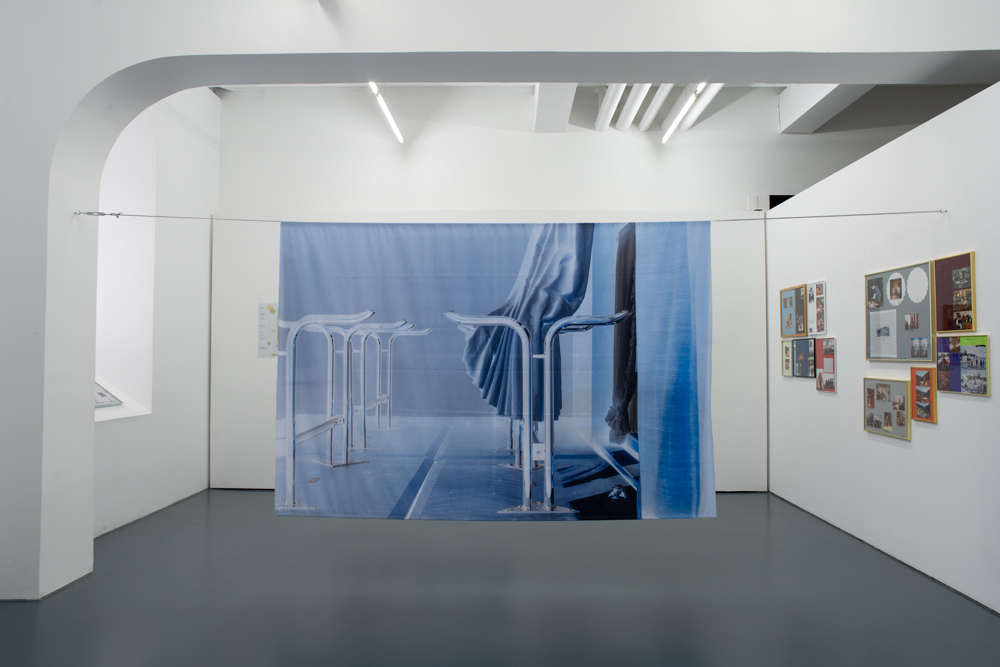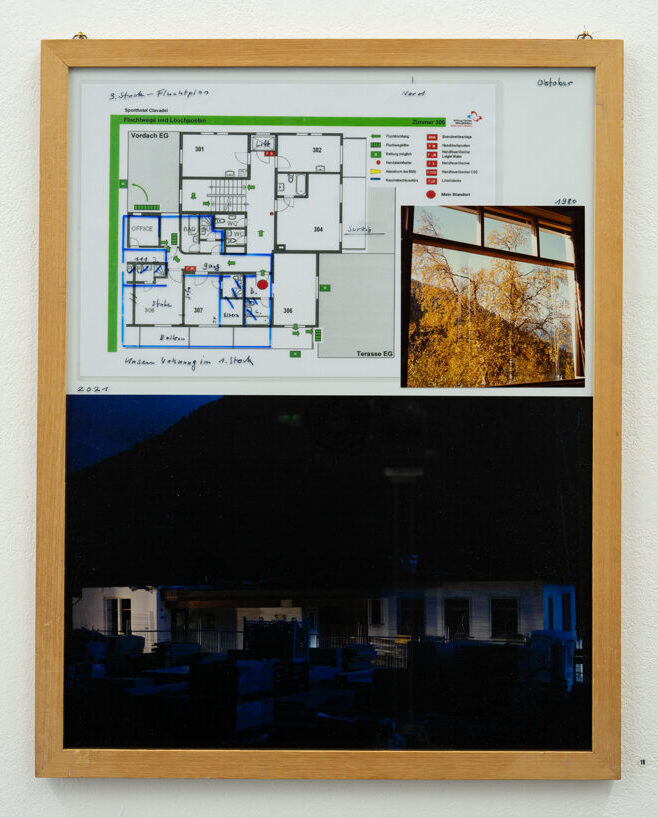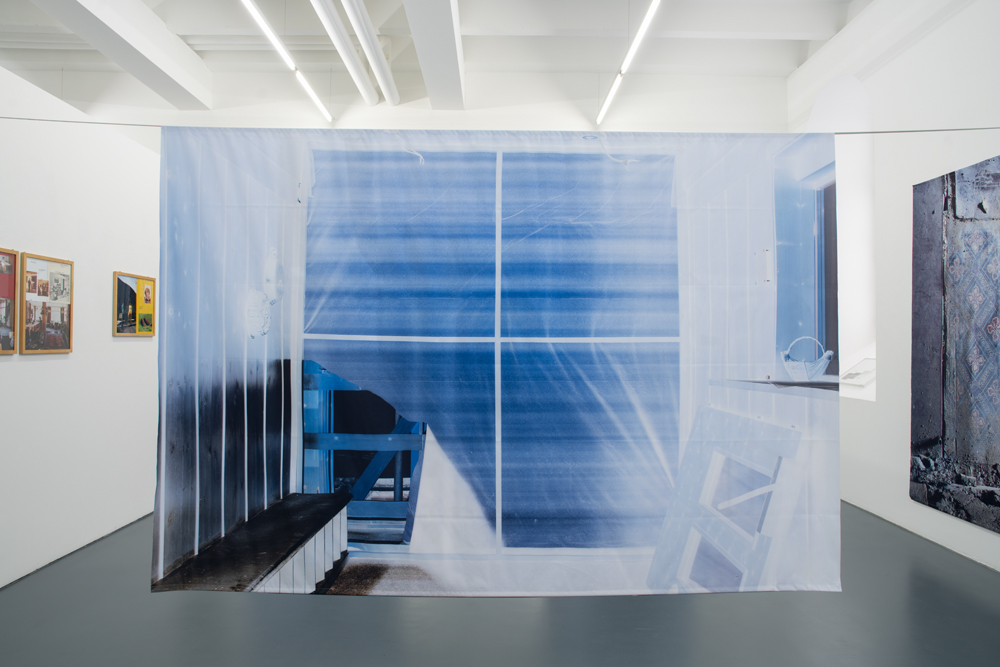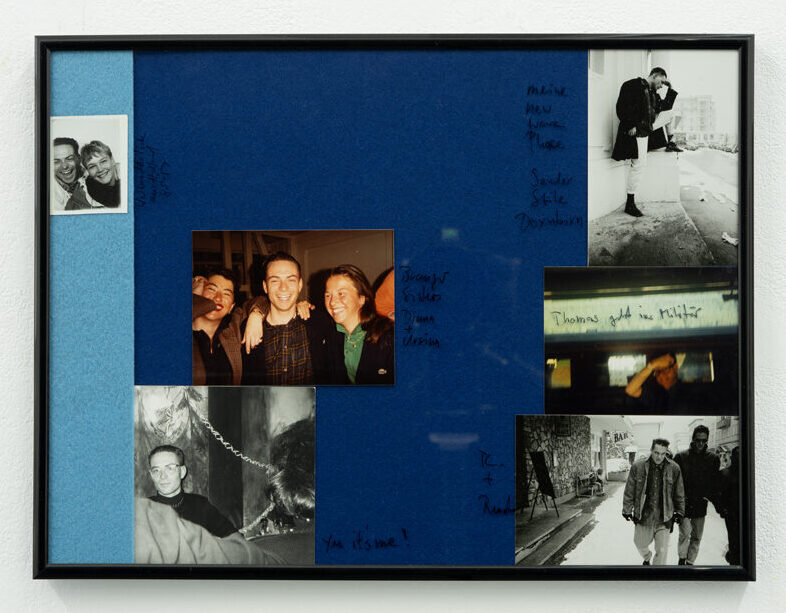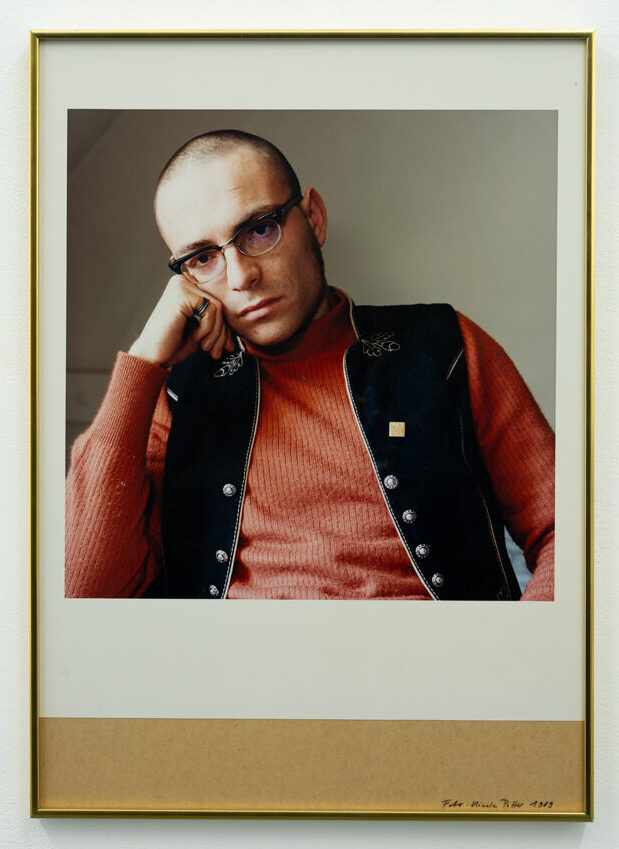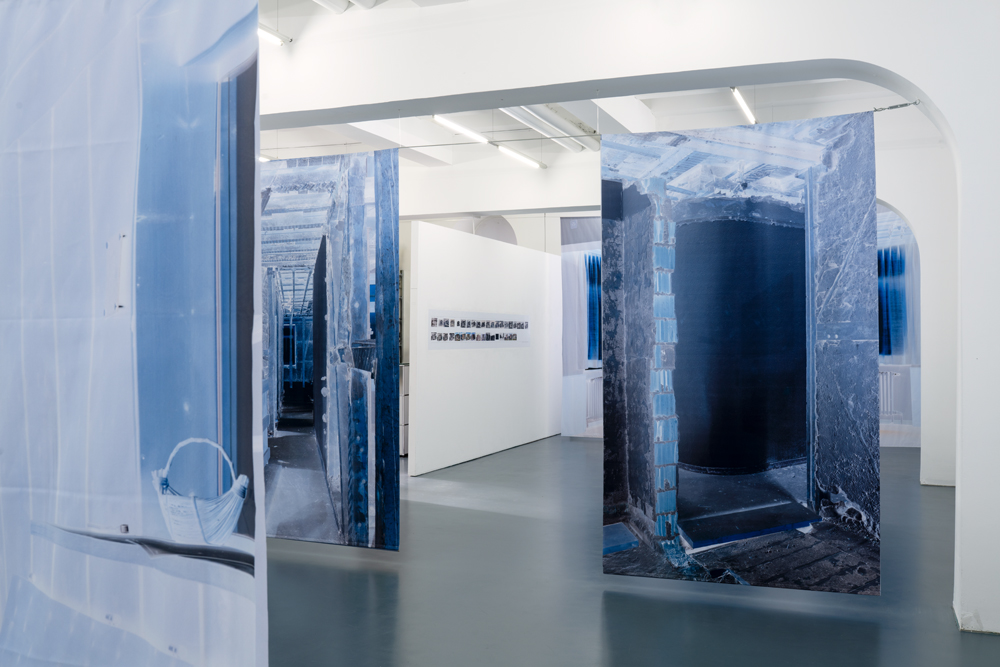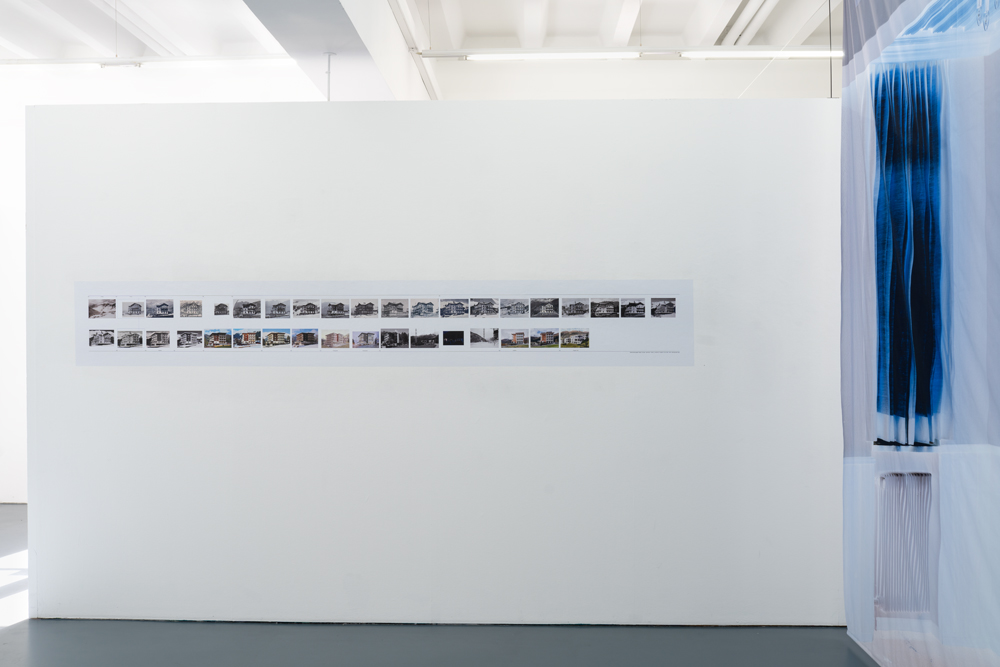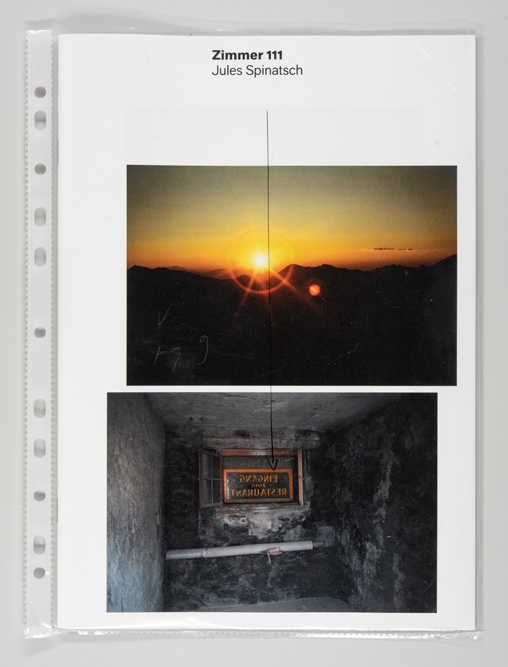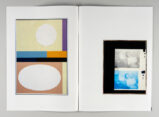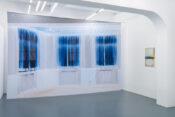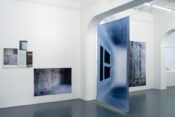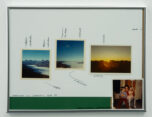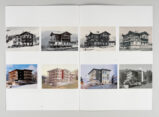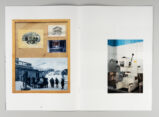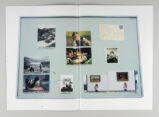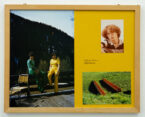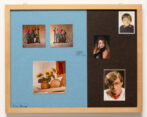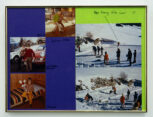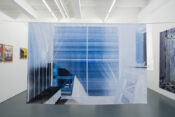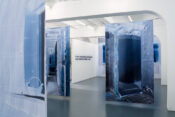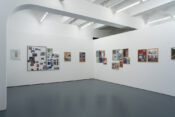Joerg Bader
Jules Spinatsch — Zimmer 111
Beinahe magisch ist die Zimmernummer: einhundertelf – und noch magischer die Idee, in einem Hotel aufzuwachsen. Das war die Kindheit und Jugend von Jules Spinatsch im Sporthotel Clavadel bei Davos, das seine Grosseltern und Eltern von 1957 bis 1986 führten.
Das Leben in Hotelzimmern
ist von Mythen umrankt: Im Chelsea Hotel in New York hausten vor allem arme Künstler, reiche Künstler mieteten sich im Danieli in Venedig ein – und das Sporthotel Clavadel lag irgendwo dazwischen. Jules Spinatschs Jugend spielte sich in einem Familienbetrieb ab, der die Zeitspanne vom frühen Kurtourismus im späten 19. Jahrhundert bis hin zu den ersten Hochphasen des Massentourismus umfasst.
Die Ausstellung nimmt mehrere Erzählstränge auf: vom Hotel zu Segantini, Kirchner und Lise Guyer, über Roland Collombin bis hin zu Spinatschs Familie. Vor allem aber erzählt sie von seiner Kindheit in einem Seitental von Davos, wo Heidi und Peter und Schellenursli nebenan wohnen – und von einer Jugend, die Winnetou, Dennis Hoppers Easy Rider und Stanley Kubricks Film The Shining gekannt hat.
Jules Spinatschs bereits achte Einzelausstellung in der Galerie Luciano Fasciati verbindet im Ausstellungsraum eigene und historische Fotografien mit Ansichtskarten, Dokumenten und Aufnahmen aus Familienalben zu einer opulenten auto-bio-fotografischen Installation.
Kurz vor dem Abriss des Hotels im Jahr 2019 verbrachte Spinatsch einen ganzen Tag allein im Inneren der Hotelruine – um neue Bilder zu machen und innere Bilder, sowie vergessene Momente aufzurufen. Dabei entdeckte er im Untergeschoss einen Raum, den er als Kind nie betreten hatte. Darin befand sich ein Fenster, das ins Erdreich führte, mit der Aufschrift «Eingang Restaurant». Spinatsch nahm es als Aufforderung, nun den Boden der Geschichte umzugraben – bevor das Haus abgerissen und als Phoenix, als Neu-Nachbau, wieder auferstehen sollte. Phoenix war der Projektname des Architekturwettbewerbs für den 2023 eingeweihten Neubau.*
Während seiner Recherche stellte der er fest: «Von den Momenten, an die ich mich erinnere, gibt es meist keine Fotografien – und an die Momente, von denen es Fotos gibt, kann ich mich kaum erinnern. Oder haben die Bilder der Fotografien meine eigenen Erinnerungen ersetzt?». Mit Zimmer 111 präsentieren Luciano Fasciati und Jules Spinatsch eine Premiere – und zugleich ein Wagnis. Denn die künstlerische Auseinandersetzung mit der eigenen Biografie lag bisher fern von Spinatschs dreissigjähriger künstlerischer Praxis.
Allerdings kennen wir von ihm zwei Hotel-Serien aus den Jahren 2011 und 2012, die im Kabinett der Galerie zu sehen sind: Digestif – Z’Hotel isch gar nid so schlimm entstand im Hotel Bregaglia (Promontogno), wohin Luciano Fasciati Künstler:innen für eine Gruppenausstellung einlud. Auch für Exit Strategies war der Künstler Hotelgast: Für die Ausstellung Real Venice – eine Kollateralveranstaltung der Biennale – wurden namhafte Fotograf:innen eingeladen, um eine Arbeit in Venedig zu realisieren. Jules Spinatsch zeigte eine Serie Fotografien unterschiedlichster Hotelzimmer mit ihren Fluchtplänen und einen Kurztext. Darin schlägt er einen Bogen von seiner Situation in Venedig zu den Akteuren in Rainer Werner Fassbinders Film Warnung vor einer heiligen Nutte, bis zu Stanley Kubricks The Shining. Rückblickend erkennen wir, dass das Entkommen aus dem Familienhotel in Clavadel und aus Davos für ihn die Basis legte, um später in Zürich zur Kunst zu kommen.
* Das Haus ist schön geworden, die Umgebungs-Gestaltung und Bebauung ein Desaster.
EN:
Jules Spinatsch — Room 111
There’s something magical about the room number one hundred and eleven – and even more magical, perhaps, the idea of growing up in a hotel. That was Jules Spinatsch’s childhood and youth at the Sporthotel Clavadel near Davos, run by his grandparents and parents from 1957 to 1986.
Life in hotels is shrouded in myth: the Chelsea Hotel in New York was mainly home to struggling artists, while wealthy artists stayed at the Danieli in Venice – and the Sporthotel Clavadel occupied a place somewhere in between. Jules Spinatsch’s youth was spent in a family business that bridged an era stretching from early tuberculosis treatments in the late 19th century to the first boom of mass tourism.
The exhibition weaves together several narrative strands: from the hotel to the artists Giovanni Segantini, Ernst Ludwig Kirchner and Lise Guyer, to the ski racer Roland Collombin and Spinatsch’s own family. Above all, however, it tells of his childhood in a side valley of Davos – a place where Heidi, Peter, and Schellenursli live next door – and of a youth shaped by Winnetou, Dennis Hopper’s Easy Rider and Stanley Kubrick’s film The Shining.
Shortly before the hotel’s demolition in 2019, Spinatsch spent an entire day alone inside its ruins – taking new photographs and conjuring inner images and forgotten moments. In the basement, he discovered a room he had never entered as a child. It contained a window opening into the earth, with the inscription “Restaurant Entrance.” Spinatsch took it as an invitation to dig up the hotel’s history – before the building was torn down and resurrected as Phoenix, a new replica. Phoenix was the project name of the architectural competition for the new building, which was inaugurated in 2023.*
During his research Spinatsch realised: “Of the moments I remember, there are almost no images – and I can barely remember the moments that are captured in the existing photographs. Or have the images replaced my own memories?” With Room 111, Luciano Fasciati and Jules Spinatsch present both a premiere and a risk, since Spinatsch’s thirty year artistic practice has, until now, avoided any direct engagement with his own biography.
However, we are already familiar with two hotel series by him from 2011 and 2012, on view in the gallery’s cabinet: Digestif – Z’Hotel isch gar nid so schlimm (Digestive – The hotel isn’t so bad) was created at Hotel Bregaglia in Promontogno, where Luciano Fasciati invited artists to take part in a group exhibition. Spinatsch was also a hotel guest for Exit Strategies: for the exhibition Real Venice – a collateral event of the Biennale – renowned photographers were invited to produce a work in Venice. The artist presented a series of photographs of different hotel rooms with their escape plans, accompanied by a short text. In it, Jules Spinatsch draws connections between his own situation in Venice and the protagonists of Rainer Werner Fassbinder’s film Beware of a Holy Whore, extending all the way to Stanley Kubrick’s The Shining. In retrospect, we can see that his escape from the family hotel in Clavadel – and from Davos itself – laid the groundwork for his pursuit of art in Zurich.
In his eighth solo exhibition at Galerie Luciano Fasciati, Jules Spinatsch combines his own and historical photographs with postcards, documents and images from family albums to create an opulent auto-bio-photographic installation. The display in the main space of the gallery consists of seven hanging textile images and 33 tableaux.
* The building itself turned out ok, but the surrounding landscaping and development are a disaster.
